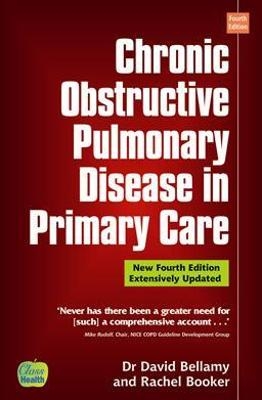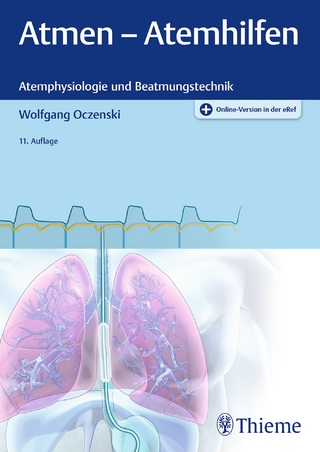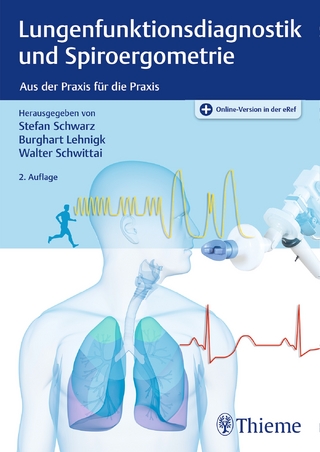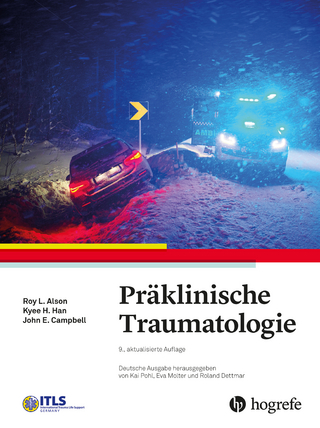
COPD in Primary Care
Class Health (Verlag)
978-1-85959-225-0 (ISBN)
- Titel ist leider vergriffen;
keine Neuauflage - Artikel merken
The fully updated fourth edition of this practical and concise handbook shows professionals how to manage COPD in primary care successfully and with worthwhile outcomes for patients. In this book, you will find guidance, protocols, plans and tests – all appropriate to the primary care situation – that will streamline your diagnosis and management of COPD.
There have been major developments in our understanding and management of COPD over the last decade and this new edition has extensively reviewed the known literature and latest Guidelines to provide the most up to date and comprehensive picture of diagnosis, investigation and best patient care and management. The style remains readily accessible with key references and guides to further reading.
Dr David Bellamy is a former GP with special respiratory interest. A trainer for Education for Health, he writes and lectures on respiratory topics and is a member of PCRS-UK, BTS and ERS. Rachel Booker is a former respiratory specialist nurse with extensive experience of nursing in primary care and medical education. She is a recipient of the Queen's Nursing Institute, Queen Elizabeth, the Queen Mother's award for outstanding service and is an honorary master of the Open University. An independent medical writer and editor, she has published extensively, and is author of Vital COPD and Vital Lung Function.
1 Introduction 1 Main points 1 What is new in this fourth edition 2 Why COPD is important 4 How important is COPD? 6 The global situation 7 What is the economic burden of COPD? 8 Doctors' and patients' attitudes to COPD 9 What can be done? 11 2 Pathology and pathophysiology 14 Main points 14 Risk factors 15 Chronic asthma 22 Chronic bronchitis 24 Emphysema 25 Small airways disease 28 COPD - a mixed spectrum of diseases 28 3 COPD as a systemic disease, co-morbidity and cause of death 35 Main points 35 Reduced FEV1 and increased mortality 36 COPD mortality - what is the cause of death? 37 Co-morbid conditions associated with COPD 37 4 Presentation and history 42 Main points 42 Symptoms 43 History taking 45 Clinical history 47 Clinical signs 47 Summary 49 5 Spirometry and pulmonary function tests 50 Main points 50 Spirometry 52 Why is FEV1 the preferred test? 61 Flow/volume measurement 65 Early screening for COPD 68 6 Assessment 72 Main points 72 Making the diagnosis and establishing a baseline 73 Bronchodilator reversibility 74 Measurement of COPD severity 76 Corticosteroid reversibility 78 Other tests to consider in newly diagnosed COPD or in helping to make a diagnosis 79 Excluding alternative and coexisting pathologies 79 Disability and handicap 82 Assessing breathlessness 84 Assessing walking distance: field tests of disability 86 Assessing the impact of the disease on daily activities 87 Impact of the disease on psychosocial functioning 87 Assessing health status 89 Summary 90 7 Smoking cessation 95 Main points 95 Why do people smoke? 97 How can smokers stop smoking? 98 What kind of support works? 99 Pharmacotherapy 101 Helping patients to stop smoking 108 8 Pharmacotherapy 113 Bronchodilators 113 Main points 113 How do bronchodilators work? 115 Short-acting bronchodilators 116 Long-acting inhaled bronchodilators 117 The UPLIFT study 118 Combined LABAs and LAMAs 119 Oral long-acting bronchodilators 119 Phosphodiesterase inhibitors (PDE4 inhibitors): Roflumilast 120 Nebulised bronchodilators 120 Corticosteroid therapy 126 Main points 126 The NICE guidelines advice on inhaled corticosteroids in COPD 128 The main actions of inhaled corticosteroids in COPD 129 Summary of important messages from major inhaled corticosteroid studies 130 What are the implications for primary care? 131 Oral corticosteroids: what is their role? 131 Corticosteroids for acute exacerbations 132 Synopsis of important clinical trials of inhaled corticosteroids in COPD 133 Combined long-acting bronchodilators and inhaled corticosteroids 141 Main points 141 Salmeterol/fluticasone studies 141 Formoterol/budesonide studies 143 Triple therapy 143 Mucolytics 144 Drug therapy of the future 145 Main points 145 New inhaled long-acting bronchodilators and corticosteroids 146 Anti-inflammatory therapies 146 Phosphodiesterase-4 (PDE4) inhibitors 147 Antiproteases 147 Alpha-1 antitrypsin 147 Antioxidants 148 Statins 148 Drugs for pulmonary hypertension 149 9 Pulmonary rehabilitation 150 Main points 150 Evidence for the effectiveness of rehabilitation in COPD 151 Why rehabilitation programmes are needed 152 The setting and timing of pulmonary rehabilitation 154 The components of pulmonary rehabilitation 155 The role of the primary health care team 159 10 Other forms of therapy 166 Main points 166 Oxygen therapy 168 Surgery 178 Vaccinations and antiviral drugs 180 Nutrition 182 Exercise 183 Psychological and social issues 184 Severe breathlessness and palliative care 186 11 Acute exacerbations and referral to hospital 193 Main points 193 Defining an exacerbation 194 Management of the acute exacerbation 196 Natural history of an exacerbation 197 Treatment in the community 199 Recurrent exacerbations 201 Prevention of acute exacerbations 202 Met Office and anticipatory care plans 205 Hospital-at-home schemes for acute exacerbations 207 Respiratory failure 208 Treatment of associated conditions 208 Consideration of specialist referral 209 12 The 2010 NICE update, GOLD 2009, The National Clinical Strategy and NICE Quality Standards 212 The NICE Guideline update 2010 212 Diagnosis 212 Spirometry 215 Determining disease severity 215 Management of stable disease 217 Pulmonary rehabilitation 218 Self-management advice 218 Exacerbations 218 Referral to a specialist 219 Follow up in primary care 219 The Gold Guidelines 222 What is GOLD? 222 The GOLD definition of COPD 222 Main clinical indicators for considering a diagnosis of COPD 222 Classification of COPD by severity 223 Goals of management 223 Assessing and monitoring disease 224 Managing stable COPD 225 The National Clinical Strategy for COPD 2010 226 Consultation on a strategy for services for COPD in England 226 Aims of the strategy 226 Strategy objectives 227 Implementation 228 Prevention and identification 228 High quality care and support 231 End-of-life care 233 The NICE Quality Standards for COPD 234 13 Organisation and training needs 236 Main points 236 Finding the patients 238 The practice nurse's role 242 Protocol and audit 243 Glossary 251 Useful addresses 259 Index
| Erscheint lt. Verlag | 15.9.2011 |
|---|---|
| Verlagsort | Bridgwater |
| Sprache | englisch |
| Maße | 156 x 234 mm |
| Gewicht | 550 g |
| Themenwelt | Medizin / Pharmazie ► Gesundheitswesen |
| Medizinische Fachgebiete ► Innere Medizin ► Pneumologie | |
| ISBN-10 | 1-85959-225-2 / 1859592252 |
| ISBN-13 | 978-1-85959-225-0 / 9781859592250 |
| Zustand | Neuware |
| Haben Sie eine Frage zum Produkt? |
aus dem Bereich


